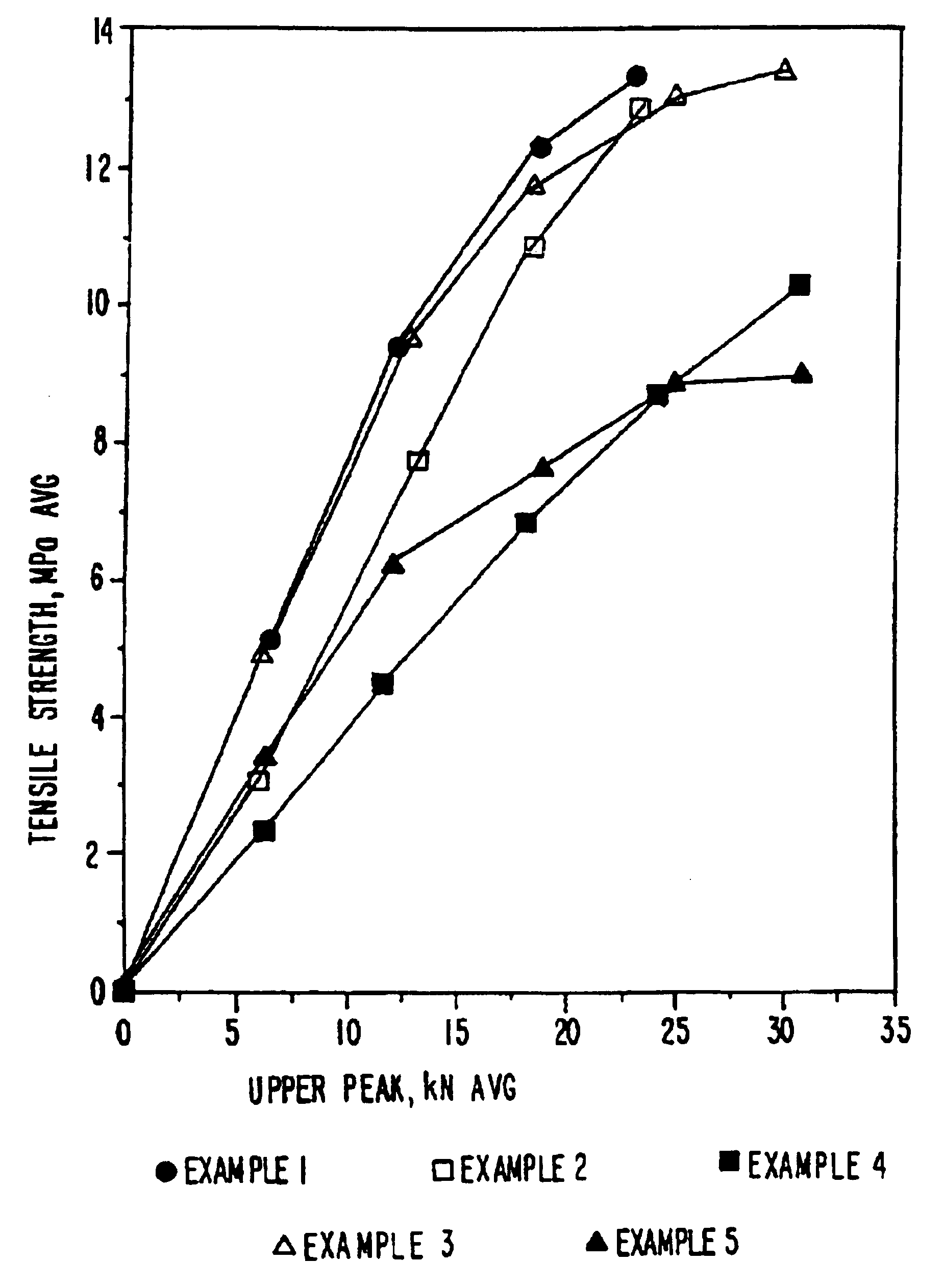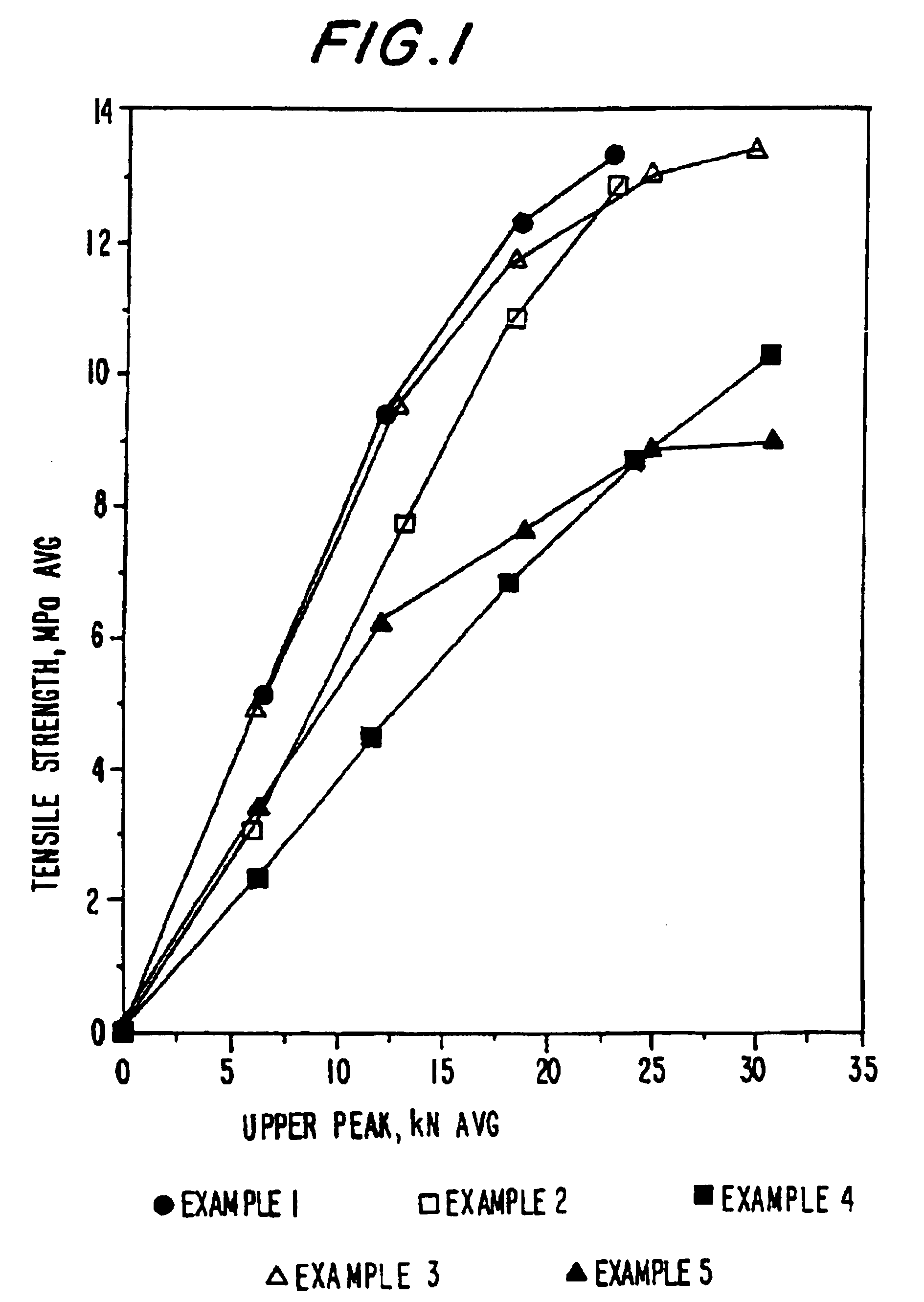Pharmaceutical excipient having improved compressibility
a technology of excipients and compressible materials, applied in the direction of pharmaceutical delivery mechanisms, capsule delivery, microcapsules, etc., can solve the problems of segregation, limited direct compression use, and the size of direct compression tablets, so as to reduce the use/cost of binder, reduce friable, and improve direct compression compactibility
- Summary
- Abstract
- Description
- Claims
- Application Information
AI Technical Summary
Benefits of technology
Problems solved by technology
Method used
Image
Examples
examples 1-3
Preparation of Coprocessed Microcrystalline Cellulose-SiO2 Compositions and Granulations Thereof
example 1
MCC-SiO2 Product-5% w / w SiO2
A. Excipient Particles
[0134]In this example, about 6.2 kilograms ofmicrocrystalline cellulose (MCC), (Mendell Co., Inc. Patterson, N.Y.) in the form of a wet cake (i.e., hydrocellulose or hydrolyzed cellulose) was combined with 5.2 kilograms of water in a mix tank to form a slurry containing about 15% solids. The pH was adjusted to about neutral with about 3 ml of ammonium hydroxide. The slurry was allowed to mix for about 15 minutes before being combined with 5% w / w silicon dioxide (SiO2), 200 m2 / g (CaboSil, PTG grade, available from Cabot Corp., Tuscola, Ill.) After allowing the materials to become intimately combined, the slurry was spray dried using a Niro Production Minor (Niro, Columbia, Md.), inlet temperature—215° C., outlet temperature—125° C., atomizer wheel speed 22,300 rpm, to provide microcrystalline cellulose-SiO2 having an average particle size of 40-60 microns.
B. Granulation of Excipient Particles
[0135]The microcrystalline cellulose-SiO2 ...
example 2
MCC-SiO2 Product-20% w / w SiO2
[0136]The processes of Example 1A and B were repeated except that 20% w / w silicon dioxide was used to form the product.
PUM
| Property | Measurement | Unit |
|---|---|---|
| particle size | aaaaa | aaaaa |
| particle size | aaaaa | aaaaa |
| particle size | aaaaa | aaaaa |
Abstract
Description
Claims
Application Information
 Login to View More
Login to View More - R&D
- Intellectual Property
- Life Sciences
- Materials
- Tech Scout
- Unparalleled Data Quality
- Higher Quality Content
- 60% Fewer Hallucinations
Browse by: Latest US Patents, China's latest patents, Technical Efficacy Thesaurus, Application Domain, Technology Topic, Popular Technical Reports.
© 2025 PatSnap. All rights reserved.Legal|Privacy policy|Modern Slavery Act Transparency Statement|Sitemap|About US| Contact US: help@patsnap.com



